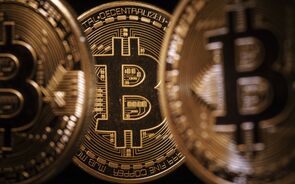False Dawn...
2 mensagens
|Página 1 de 1
False Dawn...
In our view the early-year optimism is not supported by the weight of the evidence and investors are likely to wind up as disappointed this year as they were in the previous three. We would have thought that by now market participants would have learned their lesson and not swallowed the optimism doled out by the so-called experts at the beginning of a new year.
According to Richard Russell, early in 2001 twenty-two analysts appearing on Wall Street Week issued year-end forecasts for the Dow ranging from 11,400 to 12,300. The index closed the year at 10,321. In early 2002 the same analysts forecast a year-end Dow close ranging between 10,750 to 12,100. It closed at 8,341.
Currently a Business Week survey found that analysts expected an average Dow gain of 18% for 2003. Maybe this time they’ll be right, but we think the odds are heavily against them. There is no reason why the market cannot be down for a fourth consecutive year if valuations are excessive and earnings prove disappointing.
Over a long period of time the S&P 500 has sold at an average P/E of 15 with a range of 7 to 22 excluding the late 1990s boom. At bear market bottoms the P/E lows have averaged about 11 with none higher than 16. Now the index sells at 30 times estimated earnings for 2002 and 24 times the estimated consensus earnings for 2003, which are probably too high. This is not only far above the level at any bear market bottom in history, but is higher than the P/E at the 1929 peak.
The valuations for leading technology stocks are even worse. Fred Hickey, publisher of the excellent monthly, “The High-Tech Strategist”, calculates that 16 leading tech stocks with earnings are now selling at an average of 52 times trailing earnings and 42 times estimated earnings for the following fiscal year.
While some will say that this is a result of depressed earnings, the average P/E in 1990, when earnings were also depressed, was 17. For those who don’t trust earnings numbers, the four-quarter trailing price-to-sales ratio is now 7.7 compared to only 2.3 in 1990. We note that the 16 stocks in the calculation account for 32% of Nasdaq’s total capitalization.
In addition, it is evident that retail sales are lagging while capital spending is not ready to take up the slack In this regard it is enlightening to see what passes for great news these days. Best Buy’s shares surged today on their big sales surprise. Dig a little deeper and you find that same-store sales were up by 0.4%, and this was achieved through severe price discounting, no-interest rate loans and the incompetence of some of the competition.
All in all, we believe there’s a lot of disappointing news ahead that a highly overvalued stock market has still not discounted.
According to Richard Russell, early in 2001 twenty-two analysts appearing on Wall Street Week issued year-end forecasts for the Dow ranging from 11,400 to 12,300. The index closed the year at 10,321. In early 2002 the same analysts forecast a year-end Dow close ranging between 10,750 to 12,100. It closed at 8,341.
Currently a Business Week survey found that analysts expected an average Dow gain of 18% for 2003. Maybe this time they’ll be right, but we think the odds are heavily against them. There is no reason why the market cannot be down for a fourth consecutive year if valuations are excessive and earnings prove disappointing.
Over a long period of time the S&P 500 has sold at an average P/E of 15 with a range of 7 to 22 excluding the late 1990s boom. At bear market bottoms the P/E lows have averaged about 11 with none higher than 16. Now the index sells at 30 times estimated earnings for 2002 and 24 times the estimated consensus earnings for 2003, which are probably too high. This is not only far above the level at any bear market bottom in history, but is higher than the P/E at the 1929 peak.
The valuations for leading technology stocks are even worse. Fred Hickey, publisher of the excellent monthly, “The High-Tech Strategist”, calculates that 16 leading tech stocks with earnings are now selling at an average of 52 times trailing earnings and 42 times estimated earnings for the following fiscal year.
While some will say that this is a result of depressed earnings, the average P/E in 1990, when earnings were also depressed, was 17. For those who don’t trust earnings numbers, the four-quarter trailing price-to-sales ratio is now 7.7 compared to only 2.3 in 1990. We note that the 16 stocks in the calculation account for 32% of Nasdaq’s total capitalization.
In addition, it is evident that retail sales are lagging while capital spending is not ready to take up the slack In this regard it is enlightening to see what passes for great news these days. Best Buy’s shares surged today on their big sales surprise. Dig a little deeper and you find that same-store sales were up by 0.4%, and this was achieved through severe price discounting, no-interest rate loans and the incompetence of some of the competition.
All in all, we believe there’s a lot of disappointing news ahead that a highly overvalued stock market has still not discounted.
2 mensagens
|Página 1 de 1
Quem está ligado:
Utilizadores a ver este Fórum: aaugustobb_69, Al Beca, boavista, cali010201, Google Adsense [Bot], Karra, PAULOJOAO, Pmart 1, Ugly bull, Àlvaro e 193 visitantes


